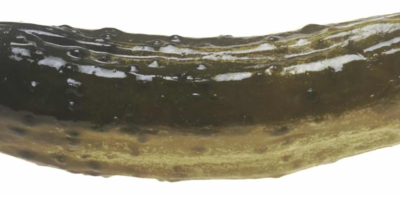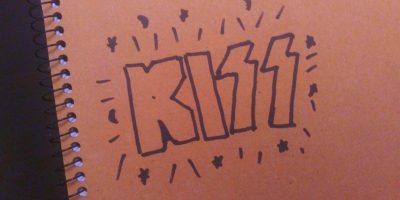w/ Tyvek, Babes, and CROSS at Al’s
By Nick Kidd
I recently opened up Elektra’s 1991 CD reissue of the MC5’s debut album Kick Out the Jams. Its liner notes flip out like a map, guiding my eyes to an abundance of American flags, a poem, a handful of old concert posters, and a lengthy passage about how the album was recorded live on Halloween at Detroit’s Grande Ballroom in 1968. It’s a convenient two-dimensional time capsule one might expect to find in a reissue, one that boasts, “The cultural circumstances surrounding the creation of this music will never again occur.”
In the early 60s, Detroit was seen as a leader in liberal race relations, the place that gave the world Motown and cars, a city the New York Times editorialized had “more going for it than any other major city in the North.” Sure, rock and roll was kicking around in the Motor City’s bowels, but Kiss wouldn’t make “Detroit Rock City” until ‘76. So how did Detroit get from Motown to Rock City?
Perhaps the most fascinating part of the Kick Out the Jams booklet is a chart of the top 31 songs from Detroit radio station WKNR for the week of February 20, 1969. The chart is overflowing with innocuous psychedelic pop songs (Classics IV’s “Traces,” Sir Douglas Quintet’s “Mendocino”), Motown (The Foundations’ “Build Me Up Buttercup,” David Ruffin’s “My Whole World Ended”), and bland commercial pop (Frankie Laine’s “You Gave Me a Mountain,” Tommy Roe’s chart-topper “Dizzy”). Apart from CCR and Steppenwolf, the chart has almost nothing today’s rock fans can sink their teeth into. The most notable exception: “Kick Out the Jams” by the MC5.
I YouTubed (yeah, a verb) every song on that singles chart confident I’d find something similar to the epic brutality of “Kick Out the Jams,” some obscure psych/garage rock outfit that history had forgotten. But nothing even came close. I walked away from the undertaking convinced that the MC5 exemplified a total rejection of hippie rock and commercial pop, genres growing dangerously close to one another (see: The Zombies).
The MC5 offered a counter counter-culture, one that found opportunity in chaos, indulgence, and excess instead of peace, love, and happiness. That Detroit simultaneously churned out this nihilistic message, a calling later synonymous with punk, and the seminally sleek sound of Motown is baffling; it’s a lasting testament to the vibrancy Detroit possessed at the time.
Yet there were signs that the Motor City wasn’t the shining city on the hill that the NY Times editorialists had once thought.
Riots and disorder were breaking out all across America throughout the late 60s, hitting Detroit with the Twelfth Street Riots in ’67. Such conditions, according to the liner notes, contributed to Kick Out the Jams’ creation: “This record has within it the vision and the violence of a turbulent time in America. This music expresses the frustration and future shock of the soul of the sixties. This is a portrayal of the struggle to create a world that was destined never to be.” The Altamont Festival in 1969 marked the de facto end of the hippie era, a free concert marred by one homicide and three accidental deaths. The MC5 were slightly ahead of the times when they dropped Kick Out the Jams earlier that year, an album that sought “to make something more significant than the mere product that dominated the charts.”
Another Detroit act helped bolster the MC5’s evangelizing of raw, back-to-basics rock: The Stooges. The Stooges were the MC5’s opening act, though history suggests that they were the more influential band. Regardless of whose side you’re on, both bands shamelessly relied more on showmanship than actual chops. The Stooges nightly unleashed Iggy Pop, the nuttiest front-man of all time, a bare-chested freakshow who puked onstage and even rolled around in piles of broken glass. The MC5, like most sentient beings, weren’t quite as crazy as Iggy. They riffed on political chicanery, peppering their set with gimmicks like toting around unloaded rifles and faking a sniper assassination of lead singer Rob Tyner.
The MC5’s manager John Sinclair, who later formed the White Panther Party, became the face of the MC5 and greatly shaped their politics and onstage antics, stoking the controversy that occasionally mired the band. Some of Sinclair’s central political tenets: “Total assault on…culture by any means necessary, including rock and roll, dope, and fucking in the streets,” abolishment of currency, and free health care for all. In other words, Sinclair and, by extension, the MC5, were a group of militant liberals with Libertarian ideals…a political movement that almost nobody took seriously. (Then again, if people can’t come together for rock and roll, dope, and fucking in the streets, maybe we can’t come together for anything.)
Apart from their reputation for putting on some of the most high-energy concerts known to man, MC5 and The Stooges are also cited as two of the first and most influential punk bands ever. Together they challenged the utopian optimism of the hippie movement as well as the norms of popular rock, eschewing catchy melodies and bright motifs in favor of harsh sounds and seditious themes. They made outsider music cool and, along with The Velvet Underground, practically invented punk.
MC5 and The Stooges helped put Detroit on the map as a hub for rock n’ roll, a reputation bolstered by Alice Cooper, Ted Nugent, Grand Funk Railroad, and, later, The White Stripes. Yet MC5 and The Stooges don’t fit comfortably alongside such household names. Rather, their music flowed outward, away from anything that would ever show up on the Top 40, and toward heavy metal, hard rock, experimental noise, and just about everything outside the mainstream. There’s a direct link between them and much of today’s alternative music.
Today you can get on the internet and buy a house, a whole fucking house you’d own, in Detroit for $500. It might have boards for windows and be missing all traces of copper, but hey, it’s yours. Needless to say, these are tough times for the Motor City: nobody wants their motors. With the jobs go the people too, making the former “Detroit Rock City” one of the worst places to start up a band.
One trio of Michiganders left for New York some years back, setting up camp there and bonding over a mutual love for skateboarding, music and art. They made it their expat mission to create and spread the barbaric blend of hard rock and shambly blues they grew up with, the sound that put Detroit on the map. This trio would grow into Awesome Color and, like their Detroit forebears, they didn’t fit neatly into the musical landscape surrounding them. But they garnered a strong contingent of fans that fell in love with their messy, supercharged, 70s-inspired rock and epic live performances. One of these fans was singer/guitarist Thurston Moore, who signed the group to his Ecstatic Peace! label and brought them on tour to open for his band Sonic Youth.
Awesome Color has played all around the world in the four years and two albums since signing to Ecstatic Peace!, including a handful of gigs right here in Lexington. I caught them last year at The Void in one of the best shows Lexington hosted all year. I was immediately sucked in by Awesome Color’s energy and sound, an amalgamation of Zeppelin, Hendrix, and Sabbath with a flair for experimentation a la Sonic Youth. Their set was a darkly euphoric, feedback-heavy, balls-to-the-wall blues rock acid binge party. And it’s time to trip again.
Recently, I picked up Awesome Color’s first album and flipped through its liner notes, trying out my armchair anthropologist hat, comparing it with the Kick Out the Jams liner notes. Unlike the MC5’s reissued debut, Awesome Color’s liner notes offer no band backstory whatsoever. What it does have: a trippy depiction of the band as psychedelic, anthropomorphic creatures; a photograph of the band; and a foldout collage constructed of tiny paper slivers surrounding a pink face.
The collage is the centerpiece of the liner notes and it’s made from pieces of old Batman and Superman comics and various children’s books, magazine advertisements, and toy package flotsam. Closer inspection reveals a satellite, a totem pole, a happy ghost, buildings, and chopped-off pieces of words, all wrought in, well, awesome colors. I guessed that it functions as a metaphor for consumer culture preying on youth, filtered through an enlightening—or terrifying—LSD experience. It could, in fact, double as a doppelganger for the Kick Out the Jams album cover, a mess of gruesome ambition pulsing with horror or ecstasy, depending on your perspective. Both images appear shattered, though, apparently, by different forces.
Since there’s no story in the Awesome Color liner notes, the artwork serves to establish their character instead. But this central, abstract image leaves things decidedly open-ended: are Awesome Color a gimmicky rock outfit ripping off their Detroit forefathers? Or are they loyal purveyors of raw, underground Detroit rock, heirs to the legacy of the MC5 throne?
Fortunately, the pleasure of experiencing Awesome Color in concert transcends this argument because, after all, it’s only rock n’ roll and it isn’t the kind of thing anyone should over-intellectualize.
Please, take this opportunity to experience Awesome Color firsthand, to bask in the revelry of some seriously ass-kicking rock, to decide for yourself what their legend will be, long before historians and rock critics decide for you. Experience one of the most bruising, brutal takes on Detroit Rock in a generation, a sound that learned a long time ago that peace and love aren’t going to cure us, a sound built on disillusion and failure, and one that doesn’t offer answers so much as an alternative: to party. Experience Awesome Color and taste what it means to be alive.
Awesome Color will be playing at Al’s Bar on Wednesday, March 24, with Tyvek, Babes, and CROSS. $5, all ages. The band’s third LP, Massa Hypnos, drops on April 6th and it’s likely you’ll hear plenty of it at the show. Recommended listening to prepare for the show: “Animal,” from their debut, self-titled album.



Leave a Reply